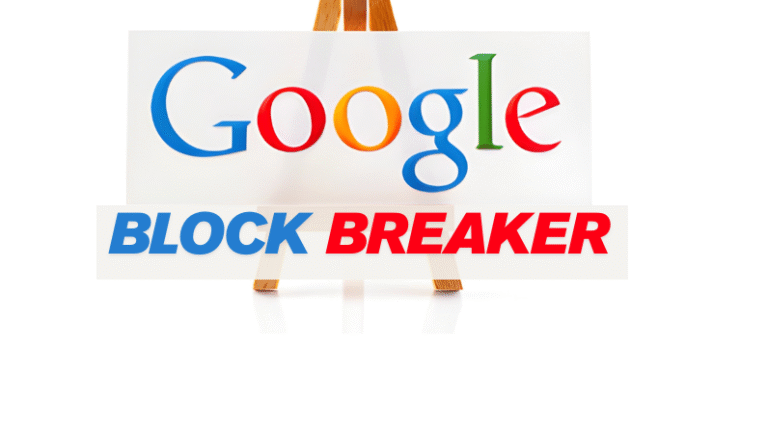In an era where complex gaming requires hours of tutorials and expensive hardware, Google Block Breaker emerges as a refreshing reminder that simplicity can be profoundly engaging. This modern reimagining of the 1976 Atari Breakout has captivated millions of players worldwide, transforming a simple browser search into an instant arcade experience. But what makes this game so compelling, and how can you transform from a casual player into a block-breaking champion?
What Makes Google Block Breaker Different from Traditional Arcade Games
Google Block Breaker isn’t just another browser game—it represents a fascinating intersection of nostalgia, accessibility, and cognitive engagement. Unlike the original Atari Breakout that required arcade cabinets or dedicated gaming consoles, this modern version lives entirely in your browser, requiring nothing more than an internet connection and a search query.
The game preserves the core mechanics that made brick-breaker games legendary: a paddle, a bouncing ball, and rows of colorful blocks waiting to be demolished. However, Google has infused the experience with contemporary design elements, responsive controls, and strategic depth that keeps players returning for “just one more round.”
The Psychological Hook: Why We Can’t Stop Playing
The addictive nature of Google Block Breaker stems from several psychological principles that game designers have understood for decades. The game creates a perfect loop of challenge and reward, where each cleared level provides immediate satisfaction while presenting a slightly more difficult puzzle. This progressive difficulty curve keeps players in what psychologists call the “flow state”—fully immersed and operating at peak performance.
Additionally, the game’s short play sessions (typically 2-5 minutes per level) make it ideal for modern attention spans. Whether you’re on a coffee break or waiting for a meeting to start, Google Block Breaker fits perfectly into those micro-moments throughout your day.
How to Access and Start Playing Google Block Breaker
One of the game’s greatest strengths is its zero-friction accessibility. Here’s how you can start playing within seconds:
Desktop Access Method
- Open your preferred web browser (Chrome, Firefox, Safari, or Edge)
- Navigate to Google.com
- Type “Google Block Breaker” or “block breaker game” in the search bar
- Click on the interactive game doodle that appears at the top of results
- Begin playing immediately—no downloads, no registration, no waiting
Mobile Device Access
- Launch the Google app or mobile browser
- Search for “Google Block Breaker” or “block breaker Google doodle”
- Tap the game interface when it appears
- Use touch controls to move the paddle left and right
Pro Insight: If the game doesn’t appear in your search results, ensure your browser is updated to the latest version. Google Doodle games sometimes appear during special events or anniversaries, so availability may vary by region and timing.
Understanding the Core Mechanics: More Than Just Bouncing Balls
While Google Block Breaker appears simple on the surface, mastering its mechanics reveals surprising strategic depth. Let’s break down the fundamental elements that separate novice players from record-breakers.
The Three-Tier Block System
Not all blocks are created equal. Understanding block resistance is crucial for efficient gameplay and score maximization:
| Block Type | Hits Required | Points Awarded | Strategic Approach |
|---|---|---|---|
| Standard Block | 1 hit | 10 points | Use as bounce points to access difficult areas |
| Double-Hit Block | 2 hits | 20 points | Target when score multipliers are active |
| Indestructible Block | Infinite | 0 points | Leverage for angle creation and strategic bounces |
The presence of indestructible blocks might seem frustrating at first, but expert players recognize them as strategic tools. These immovable obstacles can be used to create precise angles, allowing the ball to reach otherwise inaccessible clusters of high-value blocks.
Control Precision: The Foundation of High Scores
Your paddle is more than a simple barrier—it’s a precision instrument. The location where the ball contacts your paddle dramatically affects its trajectory:
- Center contact: Produces predictable, straight bounces—ideal for maintaining control
- Edge contact: Creates sharper angles—perfect for targeting corner blocks
- Moving paddle contact: Adds spin and velocity—useful for creating chaos in dense block clusters
Elite players develop an intuitive understanding of paddle physics, adjusting their position microseconds before impact to guide the ball exactly where they need it to go.
Power-Ups: Your Arsenal for Block-Breaking Domination

Google Block Breaker features three primary power-ups that can transform your gameplay from methodical to explosive. However, knowing when NOT to use a power-up is often just as important as knowing when to activate one.
Strategic Power-Up Deployment
Multi-Ball Power-Up: This fan-favorite releases additional balls onto the playing field, exponentially increasing your block-breaking potential. The optimal deployment time is when facing dense block formations where multiple balls can work simultaneously. However, avoid using multi-ball in sparse layouts where the additional balls become difficult to manage and increase the risk of losing all balls simultaneously.
Paddle Extension: This power-up widens your paddle, making ball catches significantly easier. Save this enhancement for faster-paced levels where reaction time becomes critical. The extended paddle also allows you to experiment with more aggressive angle shots since you have a larger safety margin.
Laser Capability: Perhaps the most strategic power-up, the laser allows direct block destruction without relying on ball physics. Deploy lasers when facing particularly stubborn double-hit blocks in difficult-to-reach positions, or to quickly eliminate the final few blocks of a level.
Advanced Strategies That Separate Champions from Casual Players
Achieving scores above 100,000 points (the current world record stands at 111,475 points as of March 2025) requires more than quick reflexes—it demands strategic thinking and pattern recognition.
The Angle Optimization Technique
Professional players understand that keeping the ball in the upper portion of the screen maximizes block-breaking efficiency. Each time the ball descends to your paddle, you’re essentially wasting time. By creating acute angles that cause the ball to bounce horizontally between blocks and walls, you can maintain extended sequences where the ball remains in the block zone, accumulating points rapidly.
The Priority Targeting System
When multiple block types are present, apply this prioritization hierarchy:
- Power-up blocks (highest priority): These blocks release power-ups when broken—always target them first
- Double-hit blocks: Require two hits, so getting the first hit early maximizes efficiency
- Corner and edge blocks: Hardest to reach, so eliminate them when opportunities arise
- Central standard blocks: These will naturally be cleared through general gameplay
The Patience Paradox
Counterintuitively, slowing down often leads to higher scores. Rushing your paddle movements creates unpredictable ball trajectories that can spiral out of control. Elite players maintain a calm, centered approach, making minimal paddle adjustments and allowing the ball’s physics to work in their favor. This measured approach is particularly crucial in later levels where ball velocity increases significantly.
Common Mistakes That Destroy Your Score Potential
Even experienced players fall into these traps that artificially limit their performance:
Mistake #1: Reactive Rather Than Predictive Play
Novice players watch the ball and react to its current position. Champions predict where the ball will be in two or three bounces, positioning their paddle proactively rather than reactively.
Mistake #2: Power-Up Hoarding
Some players save power-ups for “the perfect moment” that never arrives. Power-ups are most valuable when used strategically throughout gameplay rather than held in reserve.
Mistake #3: Ignoring Ball Trajectory After Impact
After hitting the ball, many players immediately refocus on paddle positioning. However, tracking the ball’s path for the first few bounces provides crucial information about which blocks will be hit and whether trajectory adjustment is needed on the next contact.
Mistake #4: Inconsistent Paddle Positioning
Drifting too far to one side leaves the opposite side vulnerable. Maintaining a centered default position with quick lateral movements provides optimal coverage and reaction time.
The Cognitive Benefits: Why Google Block Breaker Is More Than Just Entertainment
Beyond pure entertainment value, Google Block Breaker serves as an unexpected tool for cognitive development and mental sharpening. Research on similar reflex-based games suggests several neurological benefits:
Enhanced Visual Processing: Tracking a rapidly moving ball while simultaneously monitoring multiple blocks trains your visual processing speed and peripheral awareness. These skills transfer to real-world scenarios requiring quick visual assessment, such as driving or sports.
Improved Hand-Eye Coordination: The precise timing required to contact the ball at specific paddle locations strengthens the neural pathways connecting visual input to motor output. This coordination improvement can benefit activities ranging from typing to athletic performance.
Strategic Planning Under Pressure: Higher levels force players to make split-second strategic decisions while maintaining composure under increasing difficulty. This mental training parallels real-world scenarios where quick, effective decision-making is crucial.
Flow State Practice: Achieving high scores requires entering a flow state—a mental condition of complete immersion and peak performance. Regular practice entering this state through gaming can make it easier to access during other challenging activities like work projects or creative endeavors.
Level Progression: What to Expect as Difficulty Increases
Google Block Breaker employs intelligent difficulty scaling that gradually introduces new challenges:
Early Levels (1-10): Focus on teaching basic mechanics with simple block layouts and slower ball speeds. Use these levels to experiment with different paddle positions and angles without significant pressure.
Mid Levels (11-25): Introduction of mixed block types, including double-hit and indestructible blocks. Ball speed increases moderately. This range tests your ability to prioritize targets and manage more complex block patterns.
Advanced Levels (26-50): Significantly faster ball speeds combined with intricate block layouts featuring narrow passages and strategic indestructible block placements. Power-up management becomes critical for survival.
Expert Levels (51+): Maximum ball velocity with the most challenging block configurations. Only players who have mastered angle control, predictive positioning, and strategic power-up deployment will progress through these levels consistently.
Why Google Block Breaker Resonates Across Generations
The game’s cross-generational appeal stems from its ability to serve different needs for different age groups. For older players, it provides nostalgic connection to arcade gaming’s golden era, evoking memories of quarters deposited into Breakout cabinets at local arcades. The familiar mechanics trigger positive associations with simpler times.
Younger players, meanwhile, appreciate the game’s accessibility and instant gratification. In a gaming landscape dominated by massive downloads, complex controls, and steep learning curves, Google Block Breaker’s “search and play” model removes all barriers to entry. Within seconds of curiosity, players are actively engaged.
The game also serves as a universal language—its mechanics transcend cultural and linguistic barriers. A player in Tokyo faces the same challenges and experiences the same satisfaction as someone in São Paulo or New York. This universality contributes to the game’s widespread appeal and community-building potential.
Final Thoughts: Mastering the Art of Block Breaking
Google Block Breaker exemplifies how thoughtful game design can create depth within simplicity. While anyone can play, true mastery requires understanding the subtle physics, strategic power-up deployment, and psychological composure that separate good scores from exceptional ones.
The journey from casual player to high-score competitor parallels skill development in any discipline: initial enthusiasm, frustration with plateaus, breakthrough moments of understanding, and finally, consistent excellence through practice and refinement.
Whether you’re seeking a brief mental break, aiming to beat your personal best, or chasing the world record of 111,475 points, Google Block Breaker offers an endlessly replayable experience that respects your time while challenging your abilities. The next time you search for it, approach the game not just as entertainment, but as a puzzle to be solved, a skill to be mastered, and a reminder that sometimes the most engaging experiences come in the simplest packages.
Now, armed with these strategies, insights, and understanding, you’re ready to approach Google Block Breaker with new eyes. Fire up that browser, search for the game, and discover just how high your scores can climb when knowledge meets practice.
Looking for well-researched content and timely updates? Keep visiting VIPLeague.

